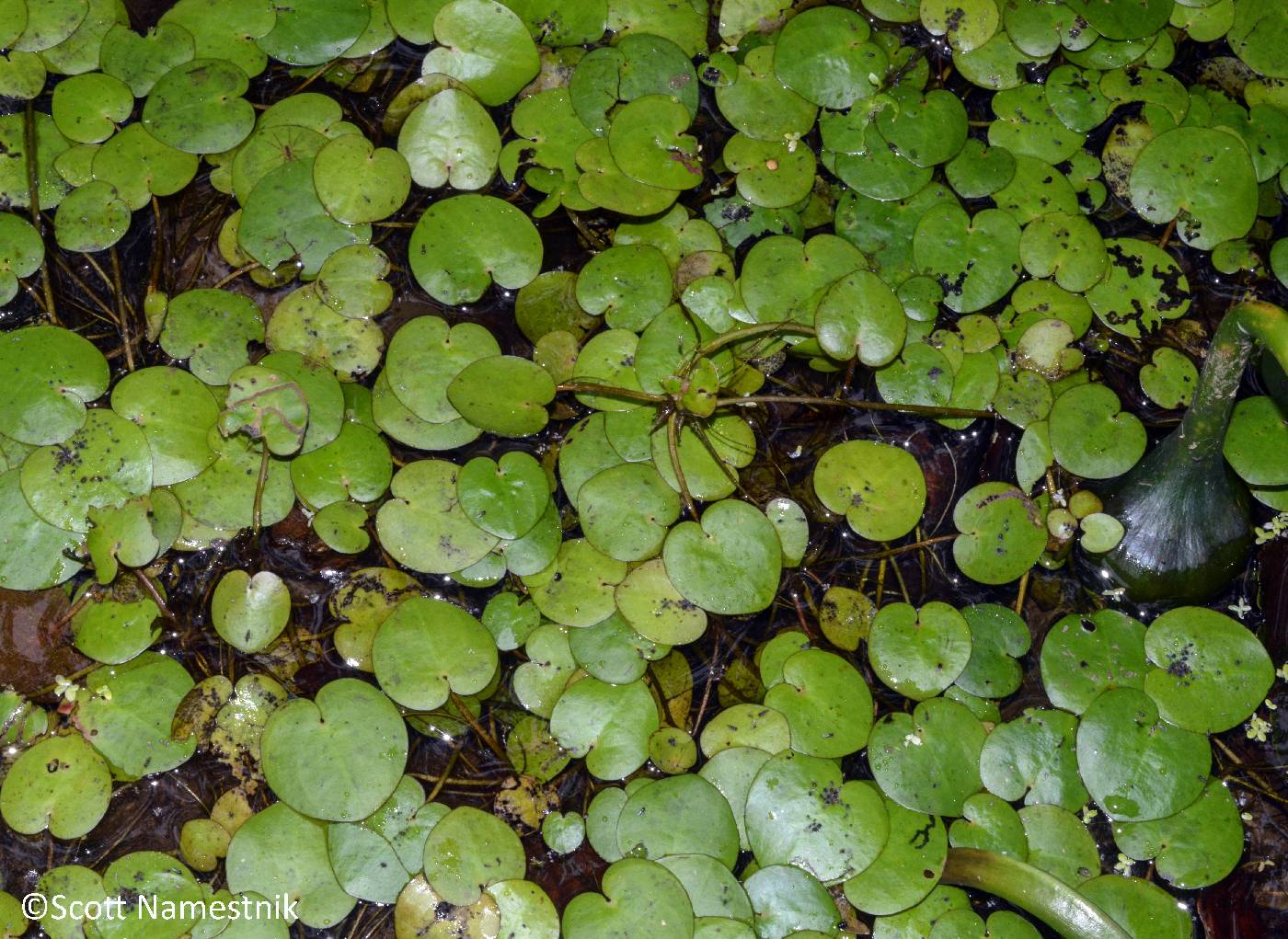Limnobium
|
Family: Hydrocharitaceae |
Plants perennial, of fresh waters. Rhizomes absent; stolons floating on or suspended in water, rooted or not, unbranched, short. Leaves basal, emergent or floating, petiolate; blade elliptic to orbiculate, base reniform or cordate, apex obtuse to acuminate; midvein without rows of lacunae along sides, blade uniform in color throughout, abaxially surface without prickles, smooth on emergent leaves or with aerenchymous tissue on floating leaves; intravaginal squamules entire. Inflorescences cymose, sessile or short-pedunculate; spathe not winged. Flowers unisexual, staminate and pistillate on same plants, emersed, pedicellate; petals greenish white to yellowish. Staminate flowers: filaments connate at least ½ their length; anthers elongate; pollen in monads. Pistillate flowers: ovary 1-locular, falsely 6--9-locular; styles 3--9, 2-fid nearly to base. Fruits ellipsoid to spheric, smooth to ridged, dehiscing irregularly. Seeds ellipsoid, echinate, covered with blunt cylindric hairs. Fls unisexual, the plants monoecious; spathes basal and sessile or short-pedunculate, the staminate 1-lvd and subtending 2-9 fls, the pistillate 2- lvd and usually subtending a solitary fl; fls long-pedicellate; sep 3; pet 3, narrow, not more than ca 1.5 times as long as the sep, or wanting; filaments united into a central column, from which the 9-12(18) anthers diverge in the upper half; ovules scattered over the surfaces of the 6-9 deeply intruded (or axially joined?) parietal placentas; styles 6-9, bifid nearly to the base, each cleft into 2 linear, hairy lobes; fr fleshy, many-seeded; aquatic or marsh herbs, rooting and producing tufts of lvs at the nodes of the long stolons, or in deeper water occasionally free- floating; lvs with long petiole and floating or emergent, dilated blade; stipule 1, axillary, adnate below to the petiole; roots usually with numerous simple branches. Monotypic. Gleason, Henry A. & Cronquist, Arthur J. 1991. Manual of vascular plants of northeastern United States and adjacent Canada. lxxv + 910 pp. ©The New York Botanical Garden. All rights reserved. Used by permission. |

